LETTERS FROM A LONGARMER : #4 -
In this post I look at the benefits of using pantographs to finish a quilt and several reasons to use them.
Quilt as Desired ...
Without taking a poll, I think it is reasonable to suggest that the most-asked question in the quilt-making process is, "How do I quilt this?"
Quilting is the penultimate step in the quilt-making process. Hours or even months of work are invested in designing and constructing a quilt top, and the fear of ruining the quilt and making irreversible errors with the quilting is a source of anxiety and disappointment.
How often have you seen the phrase "Quilt as Desired" in a commercial quilt pattern too? It is undoubtedly a well-intended phrase because there are hundreds of ways to quilt a quilt, but for many makers, the term strikes panic when all you want is a suggested quilting design to follow.
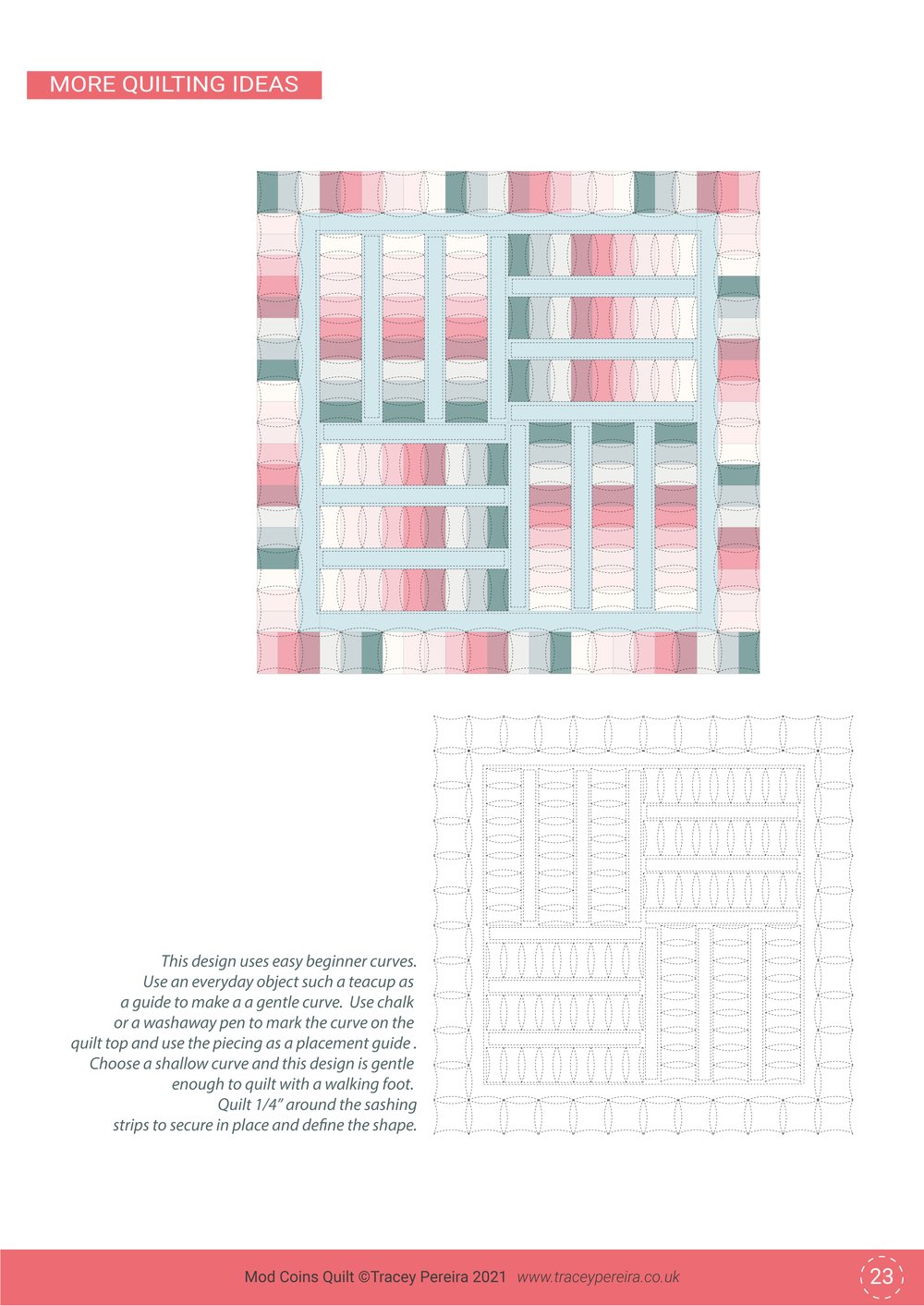
Extract from Mod Coins Pattern showing suggested quilting idea
Skills and Quilting Visions ...
Even when you have an idea of the quilting design, there is the question of skill level and experience, especially when it comes to free-motion quilting and intricate custom designs.
Whether you are a quilt-maker or a quilter-for-hire, skill and experience influence our quilting design choices.
The development of quilting skills takes time, practice and patience, and our specific vision or expectation for how we want our quilts to look after quilting may not fit with our current skills. Frustration follows and we develop a negative mindest about the whole quilting experience.

Perfectionism and Criticism...
Pursuing perfectionism adds pressure to produce the 'perfect quilt' and magnifies perceived imperfections. We are our own worse critics focusing on minor flaws or inconsistencies that others may not even notice.
Quilting a quilt takes significant time and effort, so when the final quilting outcome doesn't meet our expectations, we feel hugely letdown. We let self-criticism and self-doubt lead to procrastination and ultimately to quilt tops sitting around for years unquilted.
Of course, it is good to challenge ourselves to step outside our comfort zones. Doing so promotes growth and satisfaction when we accomplish our visions. But do we need to push ourselves for all the quilts we make? While Pantograph quilting may not necessarily be the panacea for all quilts, it can hold its own for various reasons. Let's examine a few.
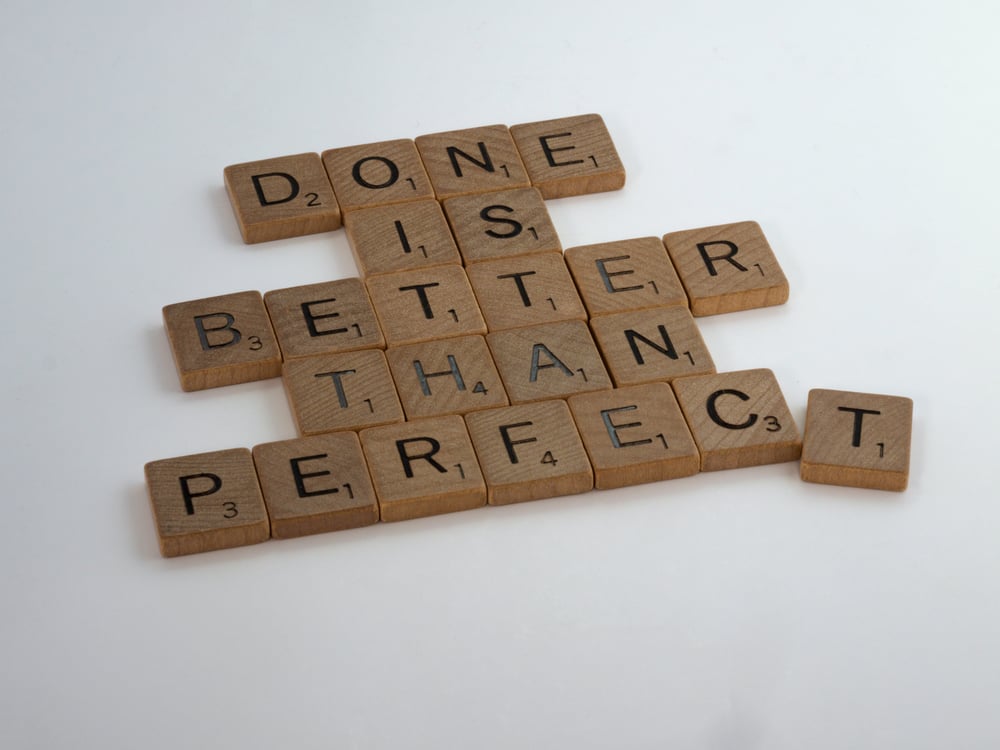
The Power of Pantographs
Remove Quilting Procrastination ...
There are aspects of quilt-making I love and those that I don't. Believe it or not, quilting is one of them. I started longarm quilting to avoid the procrastination of having so many quilt tops waiting to be quilted, and pantograph quilting is my preference over custom quilting.
Artistic Expression without Technical Skill ...
Pantograph quilting offers a unique opportunity to engage in artistic expression without exercising too much technical skill.
Whilst not underplaying the unique skills required to pantograph quilt, the very nature of the pre-designed patterns provides a perfect opportunity for stunning and intricate designs regardless of your artistic background. You can also experience the joy and satisfaction of creating something beautiful without the steep learning curve often associated with more traditional quilting techniques.
Pantographs are Beginner-Friendly ...
Pantograph quilting is accessible to quilters of all skill levels, including beginners still developing other techniques. Following a pre-designed pattern removes the frustration of unlearnt or underdeveloped skills.
There are many complex and intricate designs that quilters strive to do freehand. Take 'feathering', for example. Love or hate them, feathers add fantastic depth and visual interest to a quilt but can be hard to execute. A feather pantograph makes them so much more achievable.
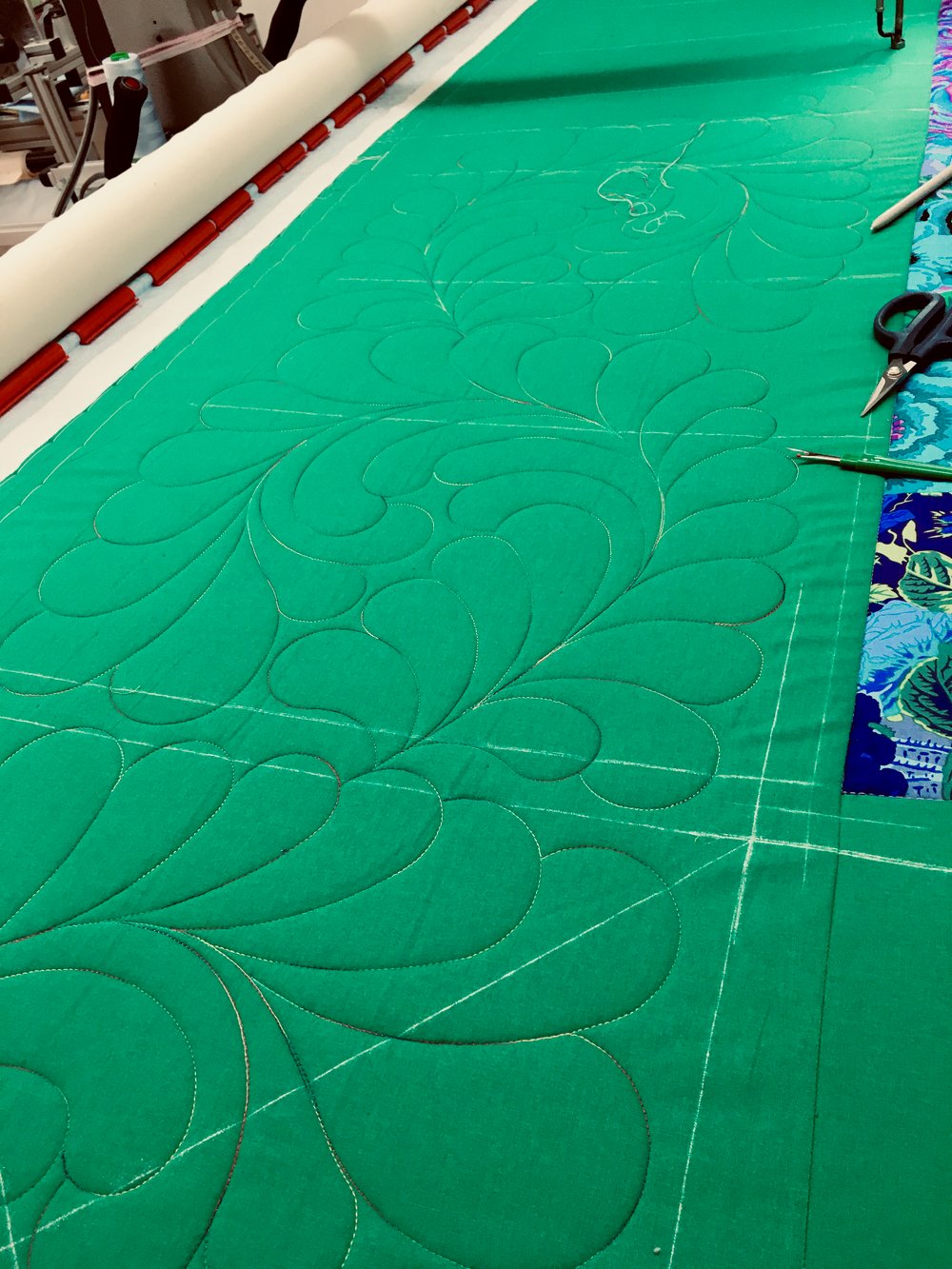
Feather Panto used as a border design
Stress-Free Quilting ...
With pantograph quilting, the quilter can relax and enjoy the process without worrying about making mistakes or getting stuck on design choices.
Why complicate your quilting world with a level of stress that serves no purpose in an otherwise fun experience of creating a quilt?
I know this is somewhat of a glib statement that doesn't hold for all situations, like Show and Heirloom Quilts, but I feel it is true for the vast majority of quilts I see being made. Consider applique quilts. Most quilt makers believe they need custom quilting. Not so. A simple panto that supports, but never outshines, the applique design will serve just as well to finish the quilt.
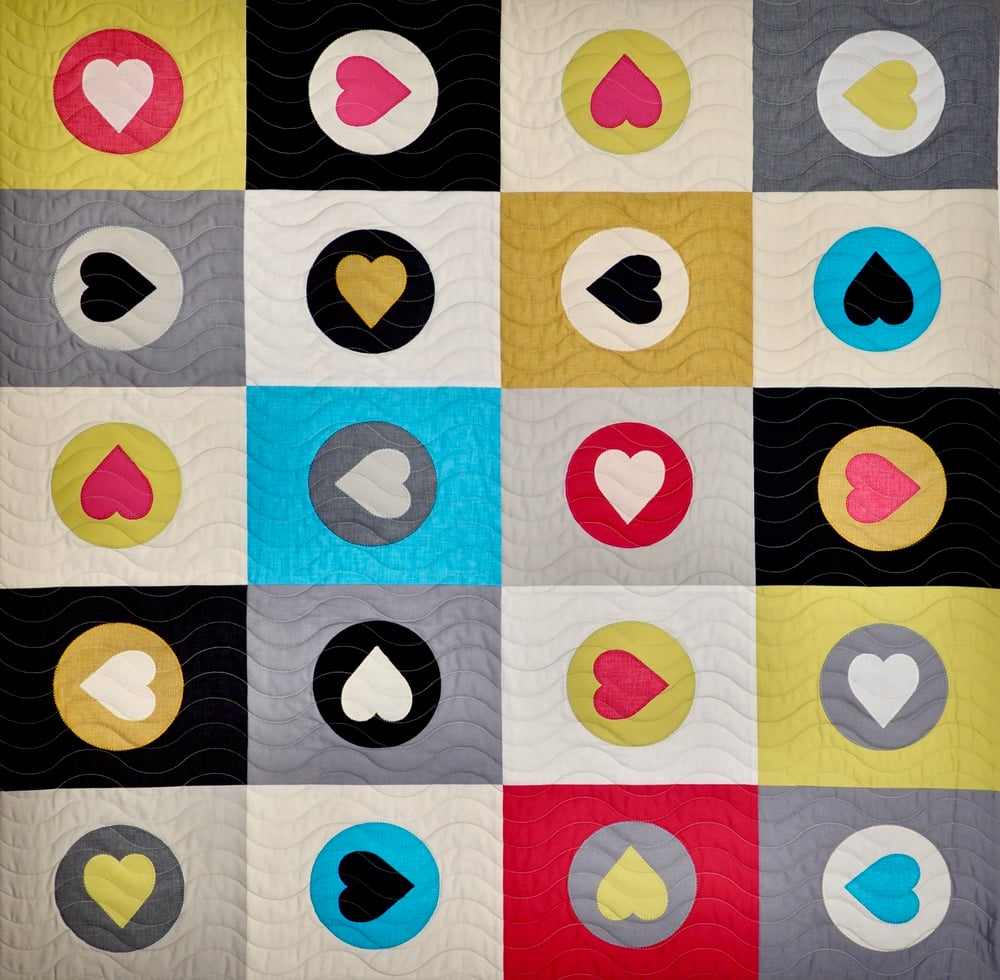
Modern Wave Panto quilted over an applique design.
Fatigue-Free Quilting ...
As far as quilting techniques go, pantograph quilting is a good choice to minimise fatigue and any physical toll on your body.
Quilting is hard work. Full stop. It can be hard on the body. If you stand to quilt, your legs and feet can hurt after a full day. If you sit down to quilt, your shoulders may have risen so high over the session they feel permanently attached to your ears. Even learning to quilt new techniques is draining. Add poor hydration and infrequent breaks into the mix, and quilting can quickly become a chore instead of a pleasure.
Quilting a simple panto for yourself, or paying a professional to do it for you, is worth the benefit of reduced fatigue on your body and allows you to continue enjoying your craft or job.
Budget-Friendly ...
Pantograph quilting is a perfect solution to finishing a quilt economically. Whether you quilt for yourself or as a business, following a pantograph pattern is a time-efficient method to complete a quilt compared with custom work. From consultation to shipping, a professional quilter will take around three times as long to complete a custom quilted quilt as a pantograph. Fees will follow suit.
If you are quilting for yourself, the monetary cost of custom work is irrelevant. Still, the time-saving benefits of a pantograph could mean more family time, an opportunity to start a new quilt, or gifting/donating more frequently.
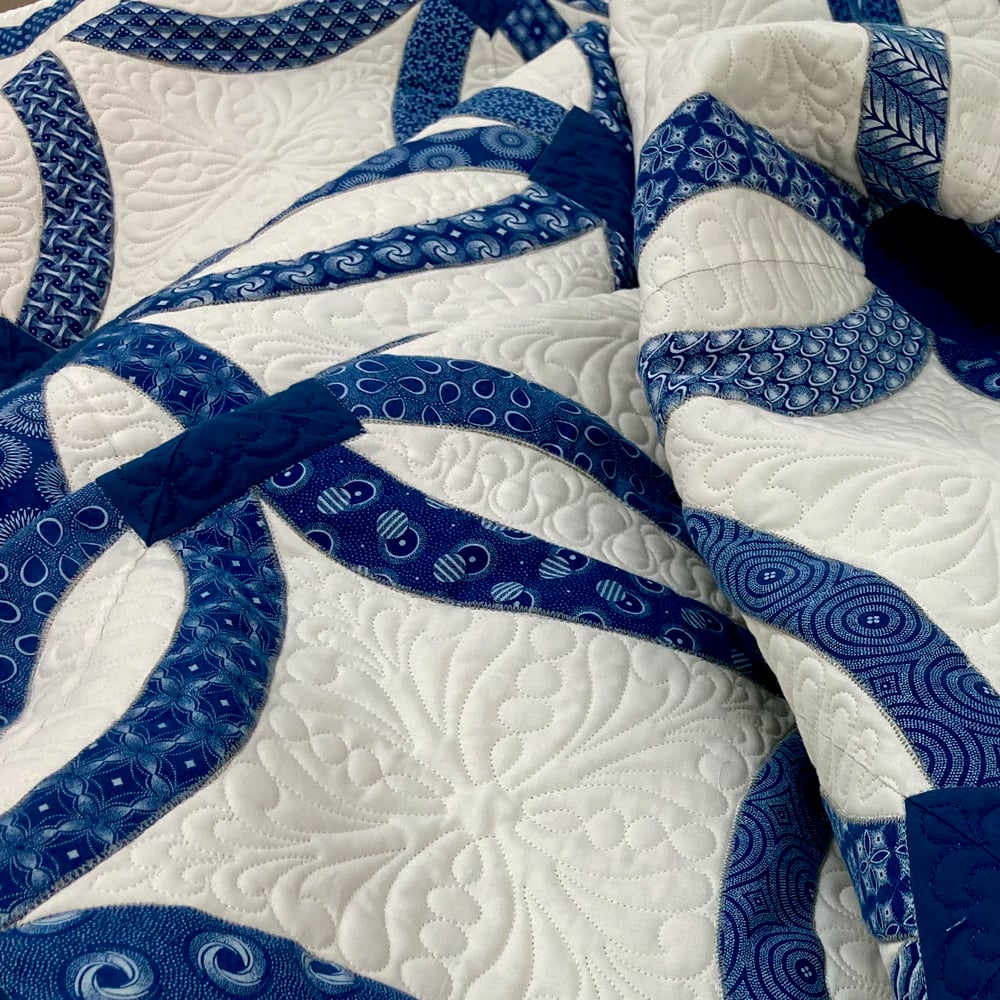
Custom quilted wedding ring with a Selection of designs from ProStitcher
Even Quilting Density ...
Following a pattern either by hand or using a computerised machine makes it much easier to maintain a consistent and even density of stitching across the quilt's surface.
Unbalanced stitching with heavy quilting in some areas and not enough in others will impact not only the look of a quilt but also the functional aspect of how a quilt hangs and performs as a quilt. Heavy, dense quilting can flatten the quilt surface, and light quilting may be insufficient to prevent the batting fibres from migrating out of the quilt. At worst, poorly managed density can lead to a quilt puckering up in some areas and hanging limp and lifeless in others. It is also worth noting that 'gaps in quilting' formed from uneven stitch density are much more visible than quilting mistakes.
There will always be times when we can use variations in stitch density to define, highlight and emphasise certain aspects of the quilt. For example, making an applique stand proud of the quilt surface, quilting a 'ghost' image of a patchwork block in an area of negative space, or creating bead-board borders. This type of quilting looks fantastic and adds alot of dimension to a quilt but it does need to be balanced and managed across the quilt to prevent any distortion, uneven quilting take-up and shrinkage. Without experience this can be a difficult aspect of quilting to get to grips with.
A well-designed pantograph reduces the risk of inconsistency in the quilting density. There is still the issue of the spacing between subsequent rows of the pantograph pattern, but that is a skill quickly learnt.
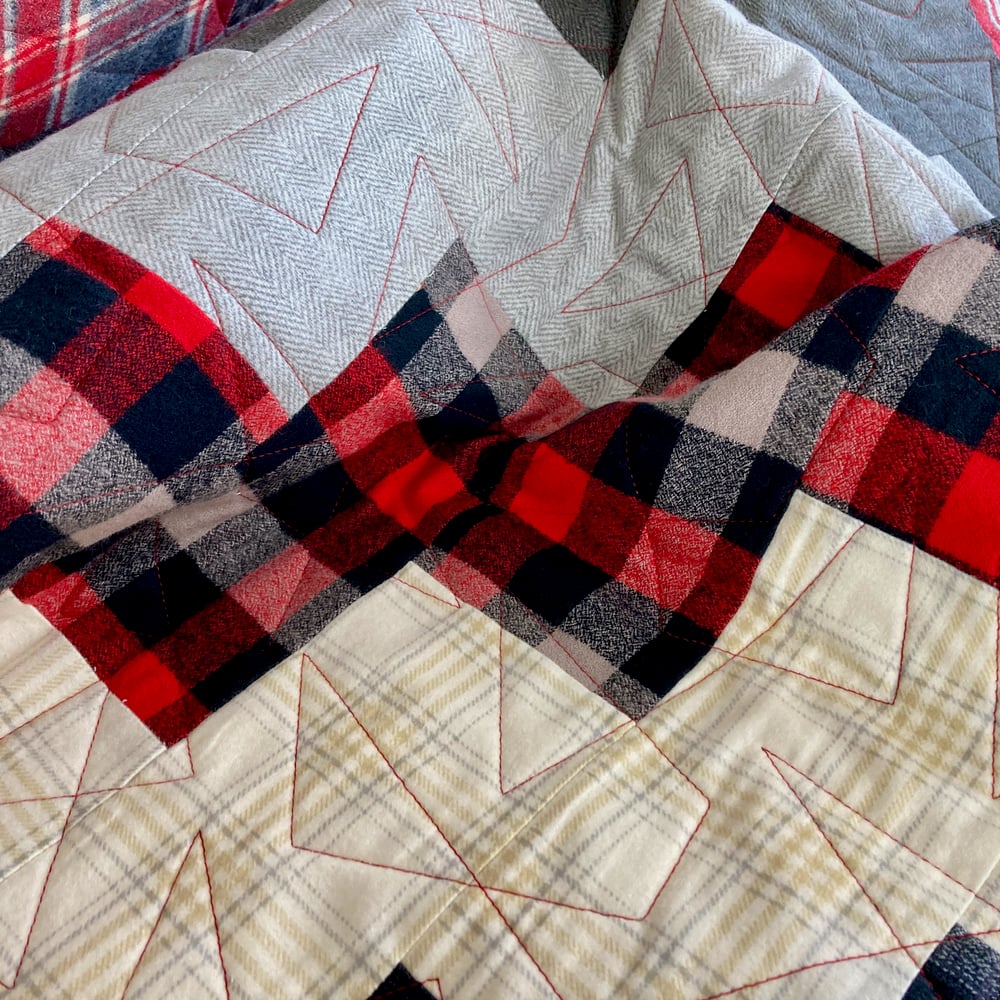
A simple triangle meander panto maintains a consistent stitch density
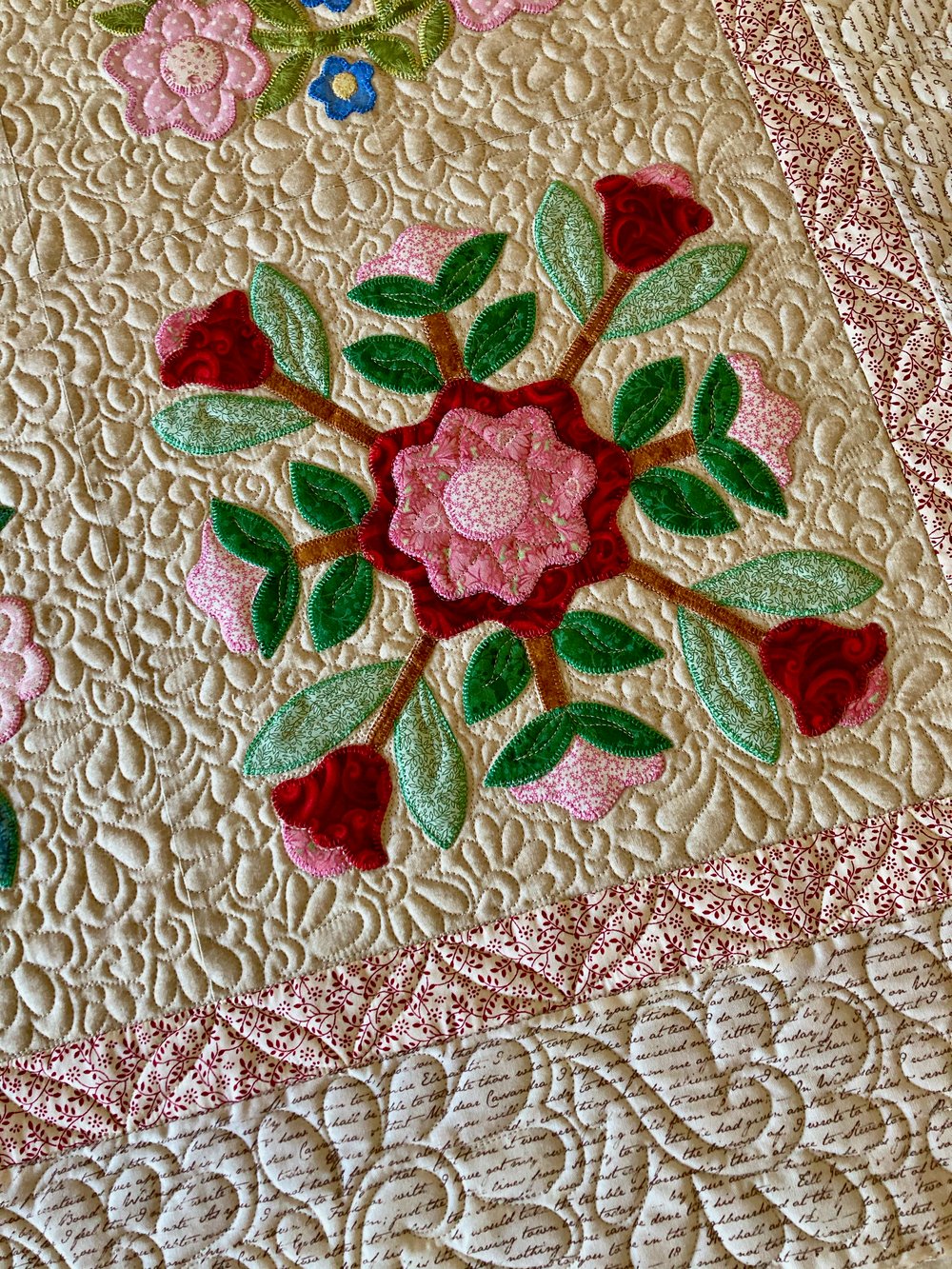
A custom quilt using variations in stitch density
to define areas of raised and relief quilting
So there you go, just a few reasons to think about using pantographs. They aren't a one-size-fits-all solution, but they are a useful addition to your quilting tool bag. Whether a beginner or an experienced quilter, pantograph quilting offers numerous benefits that enhance the finishing process and help you explore your artistic side, experience the joy of bringing beautiful designs to life and avoid the overwhelm and procrastination of answering the question "How do I quilt this?"
What's your favourite panto?
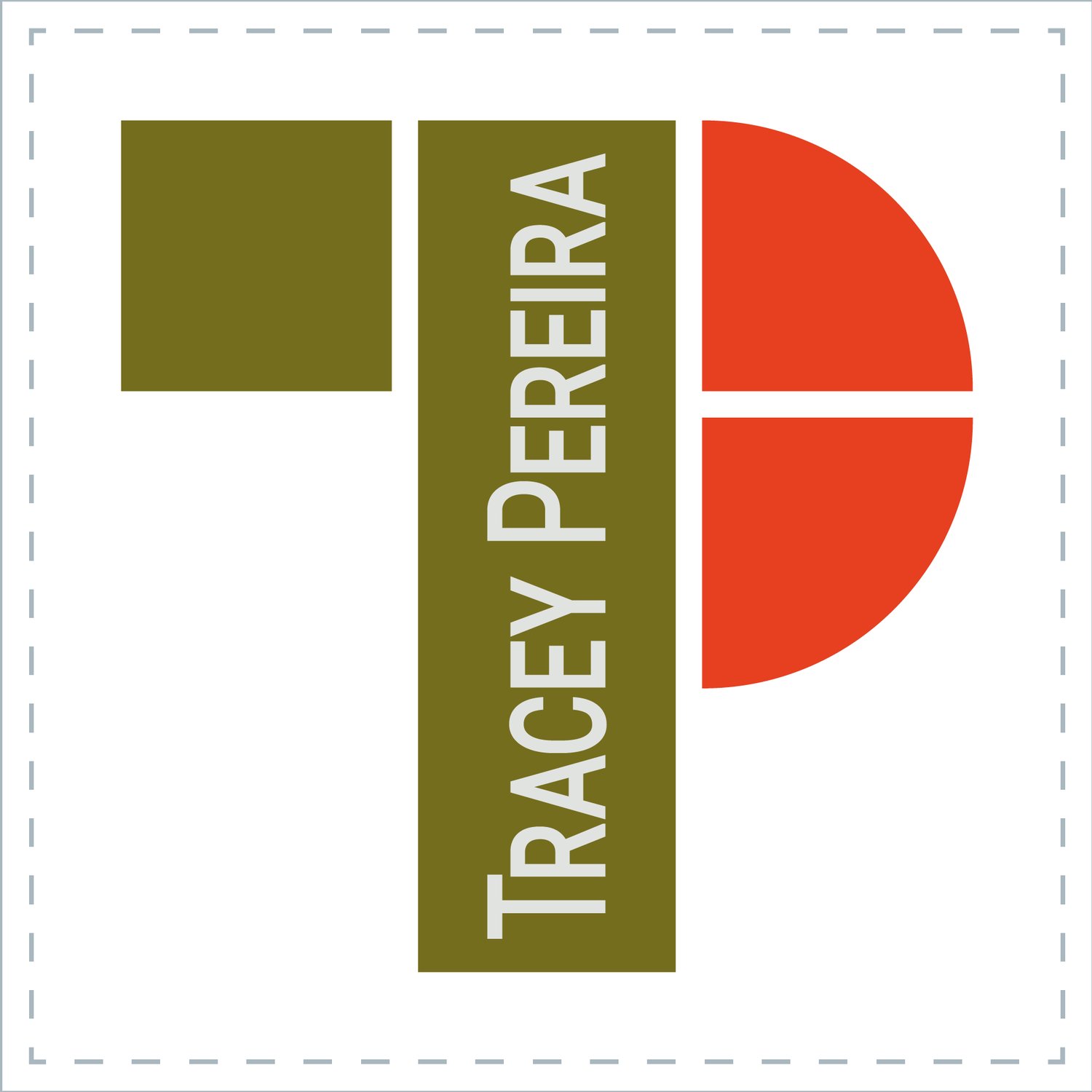

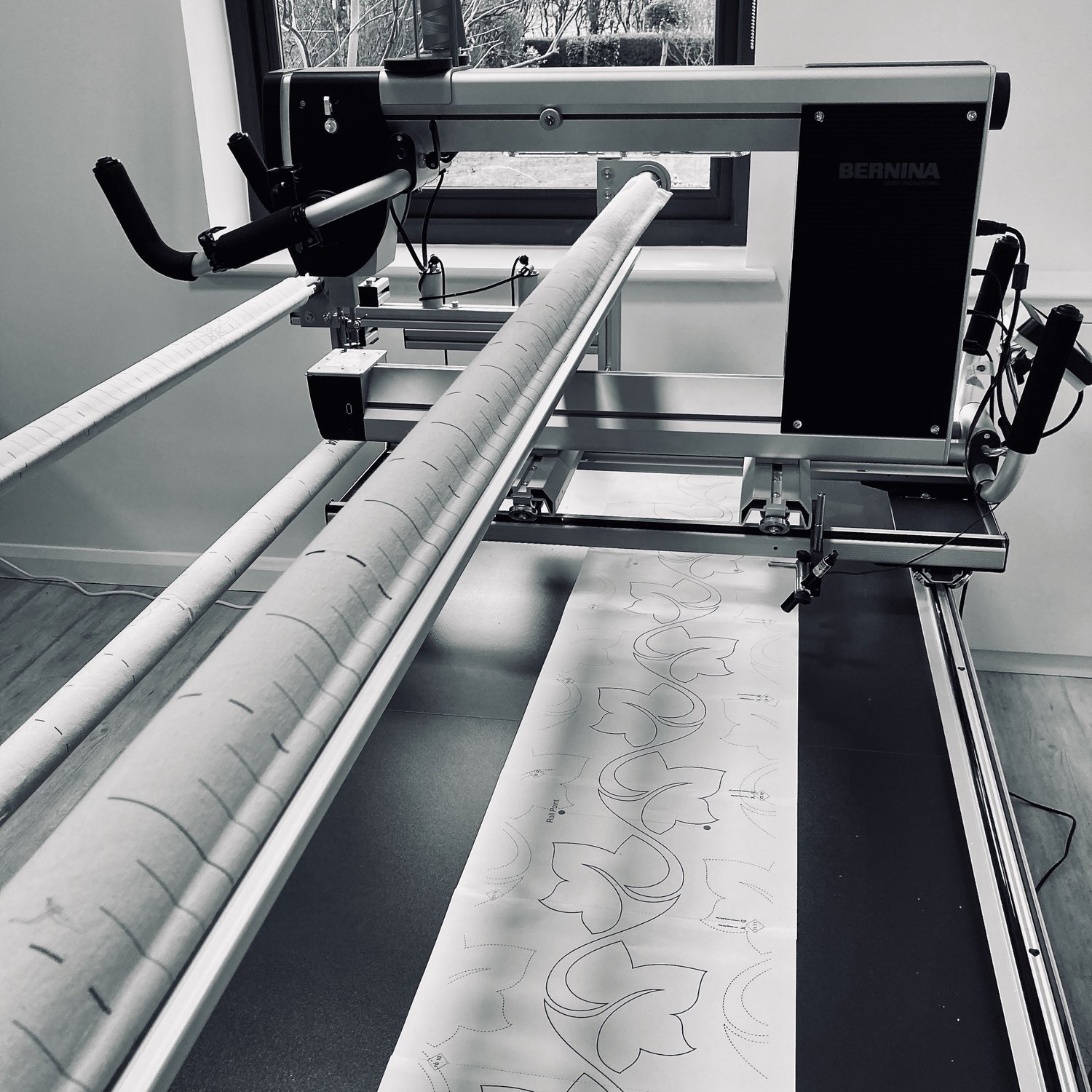
Comments ()